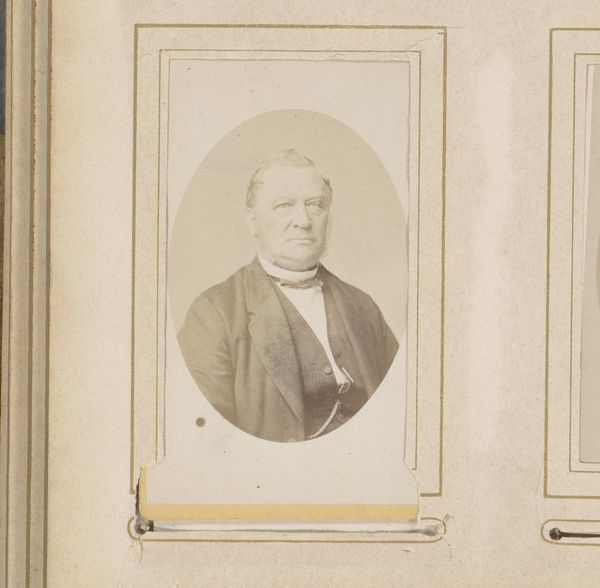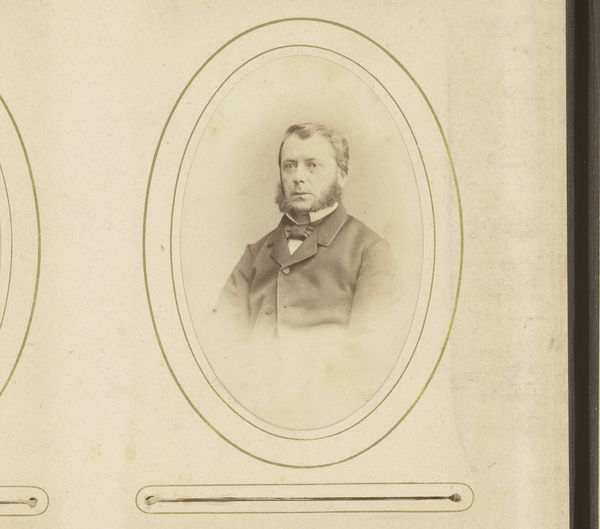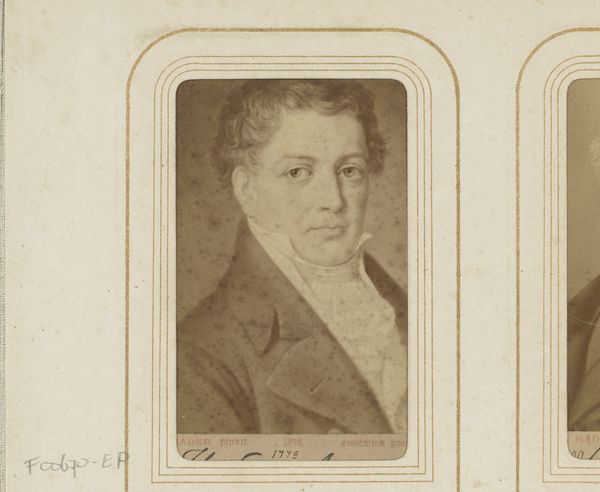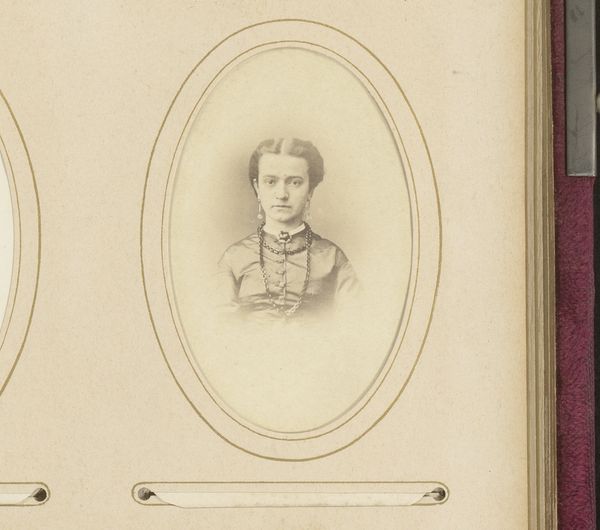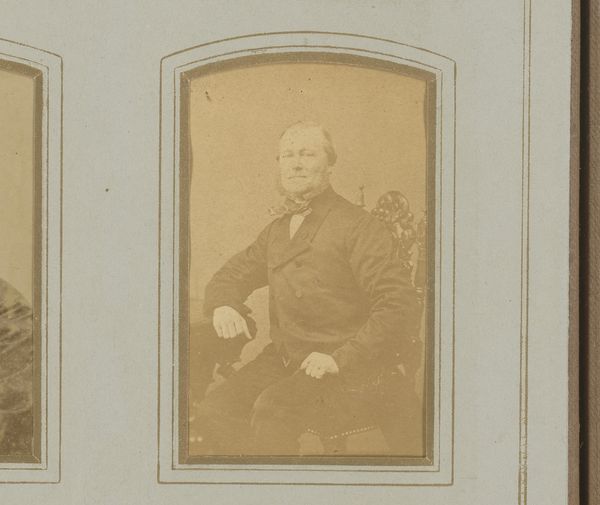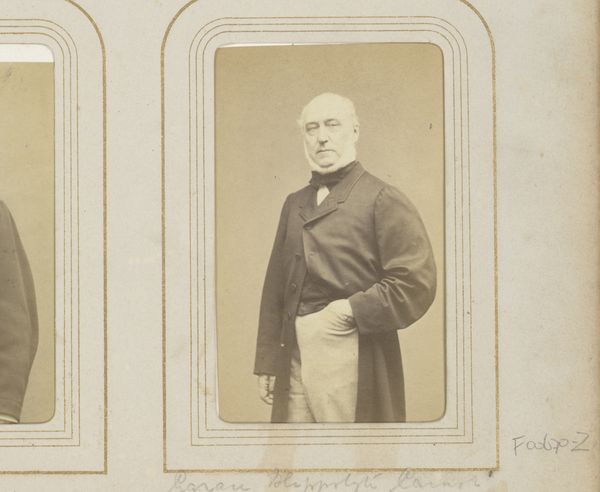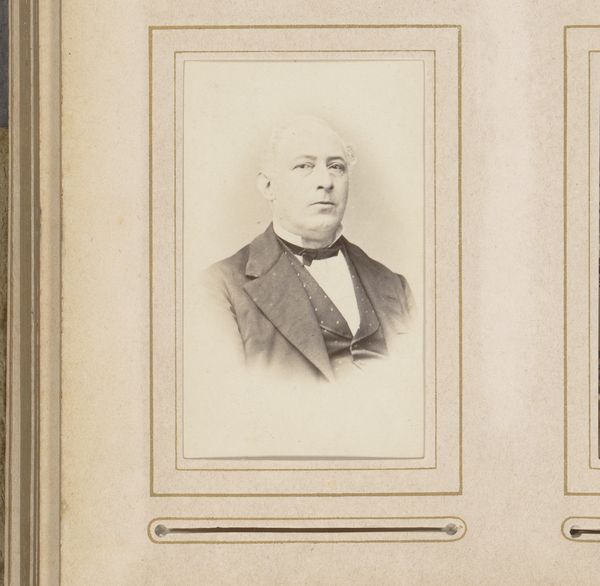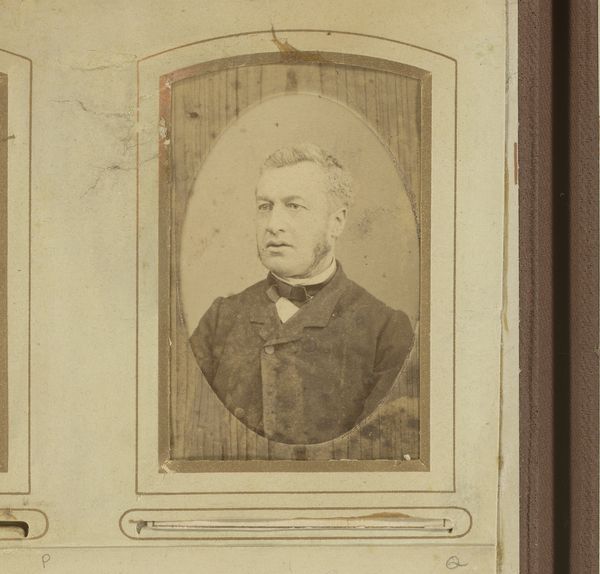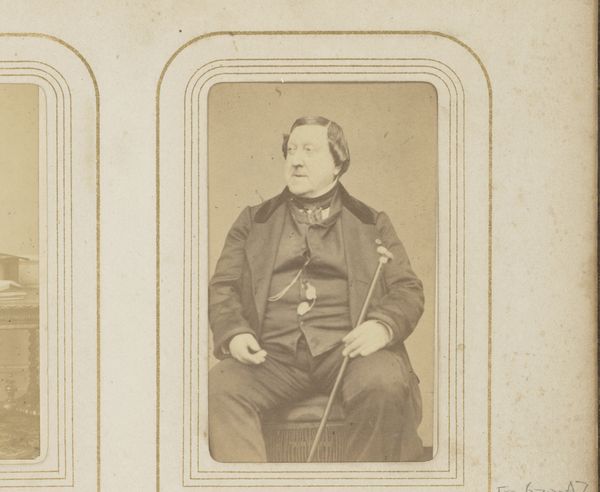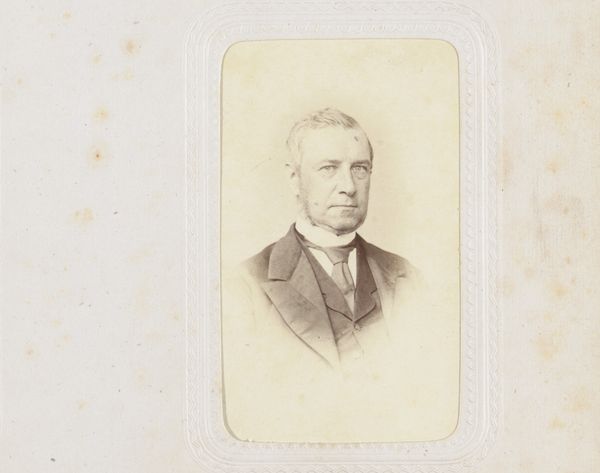
Fotoreproductie van een geschilderd portret van Robert Burns naar Ernst Hader door Sophus Williams 1877
0:00
0:00
Dimensions: height 84 mm, width 51 mm
Copyright: Rijks Museum: Open Domain
Curator: This is a photographic reproduction made in 1877 by Sophus Williams after Ernst Hader’s painted portrait of Robert Burns. It's on paper, and quite evocative, isn't it? Editor: It really is! The photographic quality, while seemingly straightforward, creates a sense of distance. It looks historical, official, and very, very… male. How do you see the historical and cultural context influencing how we perceive Burns through this reproduction? Curator: Well, consider the image itself is already a reproduction. We have Hader's painting, then Williams' photograph of it. This creates a chain of mediation, influencing how Burns is presented and received. As a celebrated poet of Scotland, his image carries political weight, especially by the late 19th century. How might this reproduction serve a public role, considering Burns' legacy and the context of Scottish identity within the British Empire? Editor: I guess, disseminating his image, through a photograph made it more widely accessible and, perhaps, helped cement a certain heroic and Romantic version of Burns that aligned with cultural and national aspirations at the time? Curator: Exactly. Photography, as a relatively new medium then, played a significant role in shaping public figures and promoting cultural values. Look at the formal pose, the careful attire; what kind of image are they crafting, and for what audience? Do you see anything in his gaze? Editor: I think there's a clear attempt to emphasize his intellectual persona. It's as if they're trying to sanctify Burns into a literary and national icon. And the slightly soft focus, like the sepia tone, adds a touch of reverence… Curator: Yes, that sepia tone makes the photograph look historical now but what did it do for audiences in the late 19th century? Editor: It’s like they're creating a relic. I’m starting to appreciate the choices made in this “reproduction” and what that says about how they perceived their own relationship to the past. Curator: Precisely. These images of significant cultural icons circulated not just to show the likeness of the sitter, but for purposes connected to cultural movements, nationalism, and education, so what do you now think this piece tells us about that time period? Editor: It's not just a portrait. It tells us a lot about constructing cultural heroes and promoting collective identities in 19th century through the new medium of photography! Thanks, I think I have a lot to reflect on.
Comments
No comments
Be the first to comment and join the conversation on the ultimate creative platform.
